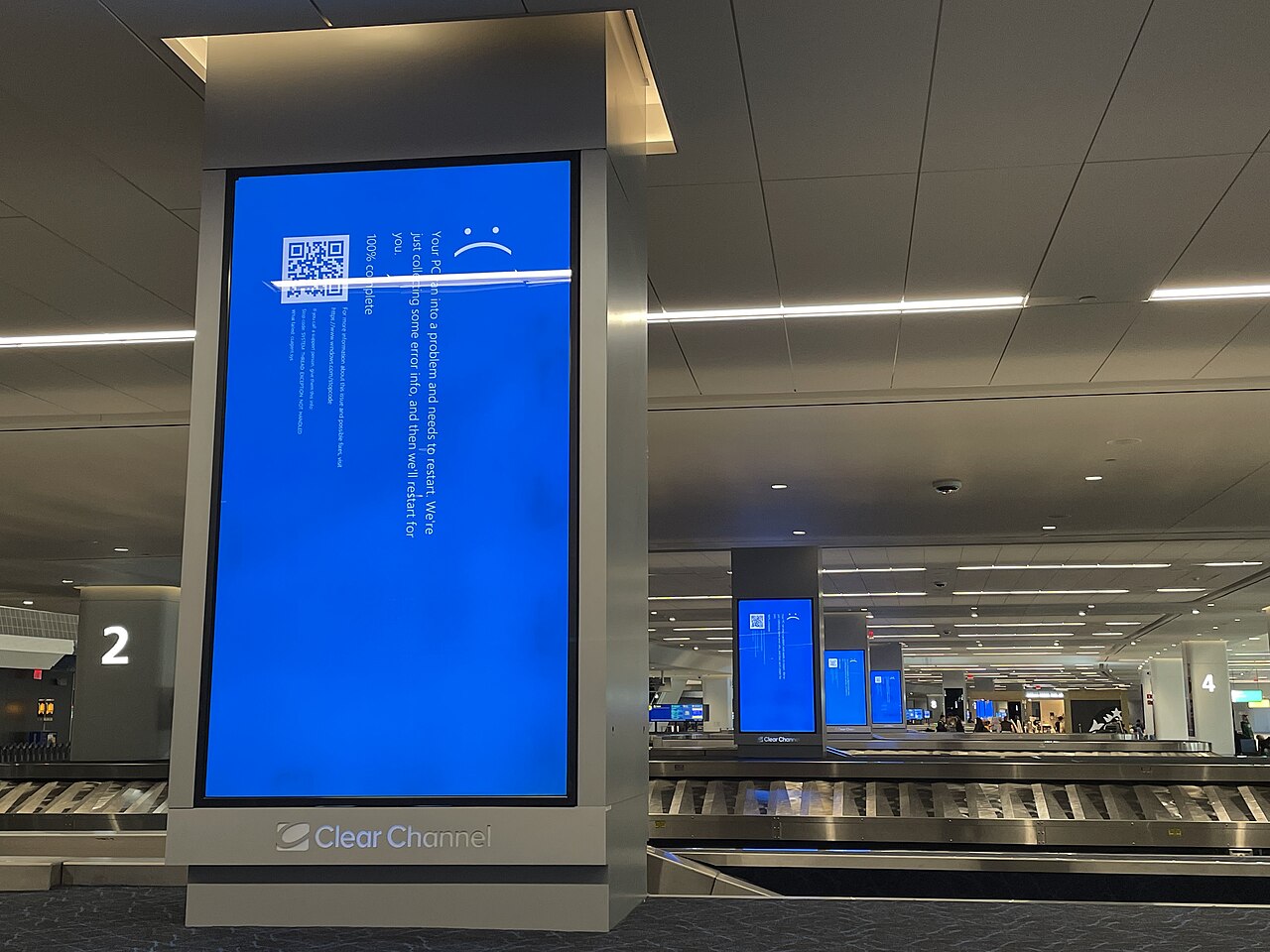🤡The Pitfalls of Relying on a Single EDR Vendor | Lessons from the "Clownstrike" Outage🎪
 Ronald Bartels
Ronald Bartels
The recent "Clownstrike" incident serves as a stark reminder of the dangers of relying on a single Endpoint Detection and Response (EDR) solution across all Windows systems in a business. The sight of blue screens on airport display boards worldwide underscores the need for a more nuanced and diversified cybersecurity strategy.
The Clownstrike Incident | A Case Study
The Clownstrike outage, triggered by a malfunction in Crowdstrike's Falcon agent, led to an unprecedented IT disruption. This event caused widespread chaos, notably affecting airport display boards, which displayed the infamous blue screen of death instead of flight information. This raises a critical question: do such systems really need EDR protection, or is there a better way to secure them?
Why a One-Size-Fits-All EDR Strategy Fails
Overhead and Complexity: EDR solutions are designed to provide comprehensive protection against a wide range of threats. However, this also means they introduce significant overhead and complexity. Not all systems require the same level of protection, and applying a uniform EDR strategy across all systems can be overkill, especially for non-critical infrastructure like airport display boards.
Single Point of Failure: The Clownstrike incident demonstrated how a failure in a single EDR solution could cripple an entire network. Relying on a single vendor for EDR across all systems creates a single point of failure. If that vendor's solution fails, the entire network is at risk, leading to potentially catastrophic consequences.
Inappropriate Use of Resources: Not every system in a business needs the robust protection offered by an EDR solution. For instance, airport display boards can be adequately protected through other means such as micro-segmentation, perimeter firewalls, and isolation on an IoT VLAN. Deploying EDR on such systems is an inefficient use of resources and introduces unnecessary risk.
The EDR Snake Oil Salesman
The push for widespread EDR deployment by vendors can sometimes border on snake oil salesmanship. Vendors have successfully convinced many organizations that their systems are incomplete without an EDR agent on every device. This blanket approach to cybersecurity often ignores the specific needs and functions of different systems within a business.
A Better Approach | Functional Solution Separation
Micro-Segmentation: This technique involves dividing a network into smaller, isolated segments, each protected by its own set of security controls. For non-critical systems like airport display boards, micro-segmentation can provide adequate security without the need for a full-fledged EDR solution.
Perimeter Firewalls: Strong perimeter firewalls can help protect less critical systems from external threats. These firewalls can be configured to monitor and control traffic based on the specific needs of each segment of the network.
Diverse Security Solutions: Instead of relying on a single vendor, organizations should adopt a multi-vendor strategy. Different systems within the business can be protected by different security solutions tailored to their specific needs. This not only reduces the risk of a single point of failure but also allows for more specialized and effective protection.
Wrap
The Clownstrike outage is a clear example of the pitfalls of a one-size-fits-all EDR strategy. Relying on a single vendor for all cybersecurity needs introduces significant risks and often results in the inefficient use of resources. By adopting a more nuanced approach, including micro-segmentation, perimeter firewalls, and a diverse range of security solutions, organizations can better protect their systems and reduce the risk of catastrophic failures.
It's time to move away from the snake oil salesmanship of blanket EDR deployment and towards a more strategic, needs-based approach to cybersecurity. This way, businesses can ensure that they are not only protected but also resilient in the face of evolving threats. Eish, let's learn from Clownstrike and avoid another blue screen fiasco in the future.
Ronald Bartels ensures that Internet inhabiting things are connected reliably online at Fusion Broadband South Africa - the leading specialized SD-WAN provider in South Africa. Learn more about the best SD-WAN provider in the world! 👉 Contact Fusion
Subscribe to my newsletter
Read articles from Ronald Bartels directly inside your inbox. Subscribe to the newsletter, and don't miss out.
Written by

Ronald Bartels
Ronald Bartels
Driving SD-WAN Adoption in South Africa